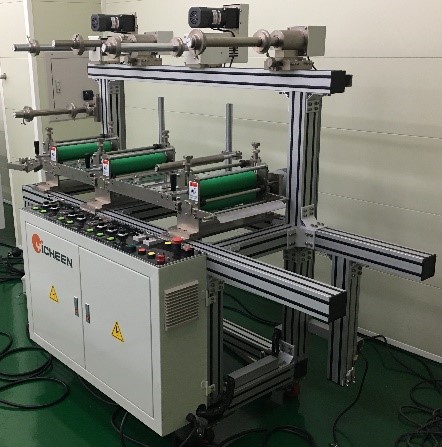YICHEEN: The Importance of Label Die Cutting Machines
If you want to make the most out of your label converting machines, it is important that you understand how it works. There are two main types of label die-cutting machines for label converting : rotary and flatbed.
What is the Label Converting Process?
The label converting process is a complex system involving many different steps. The label converting processes include label material in long rolls, apply self-adhesive (back side), drying/hot foil stamping, lamination, printing, varnishing, die-cutting(and slitting/sheet cutting). It varies depending on the application of the label, but all converting machines have more than one function as well as multiple parts to them.
What is a Label Die-Cutting Machine?
Label die-cutting is the process of making custom labels with specific shapes. Labels are typically metal or plastic sheets with printed designs on them. They're used for branding products, identifying contents and helping consumers identify information about their purchases. Because they're often small items with specific requirements, they can be difficult to make without specialized equipment like label cutters and other types of marking tools.
Label die-cutting machines are used for different applications in many industries. They could be used for in-mold label, self-adhesive label, sticker, foam, IPO, single or double sided adhesive, post-press materials, etc. The shapes range from simple squares to complex shapes that require multiple dies in order to make them.
Two Main Types of Label Die-Cutting Machines: Rotary and Flatbed
1. Label rotary die-cutting machines
Rotary die-cutting is a form of die cutting that uses a cylindrical die on a rotary press. It moves around and around in a circular motion and has blades to cut out the desired shape around the entirety of the cylinder, which is the most efficient equipment in die-cutting and more beneficial for large-volume production needs.
It is widely used in printing, mobile phones, computers, LCD monitors, digital cameras, LCD backlight, etc. There are two kinds of rotary die-cutting machines : full-rotary and semi-rotary. Both of them provide a fast and precise cutting solution for label printing manufacturing.
- Full-Rotary die-cutting machine : With the full rotary die cutting machine, you will need to change the magnetic cylinder for every repeat size.
- Semi-Rotary die-cutting machine : With the semi-rotary die-cutting machine, you only need one magnetic cylinder instead of one for every repeat size. All you need to do is to put the die-cut length in the computer system then you can easily make it run.
The full rotary die-cutting machine is used for high-speed production needs. It provides high efficiency and the speed reaches as high as 300 times per minute. Semi rotary die-cutting machine is used for low-volume production needs. No need to change the magnetic cylinder which saves your cost.
Available additional modules include : varnishing/flexo printing, lamination, hot stamping, cutting, slitting, sheet cutting. With these optional functions, you will get a multifunction die-cutting machine.
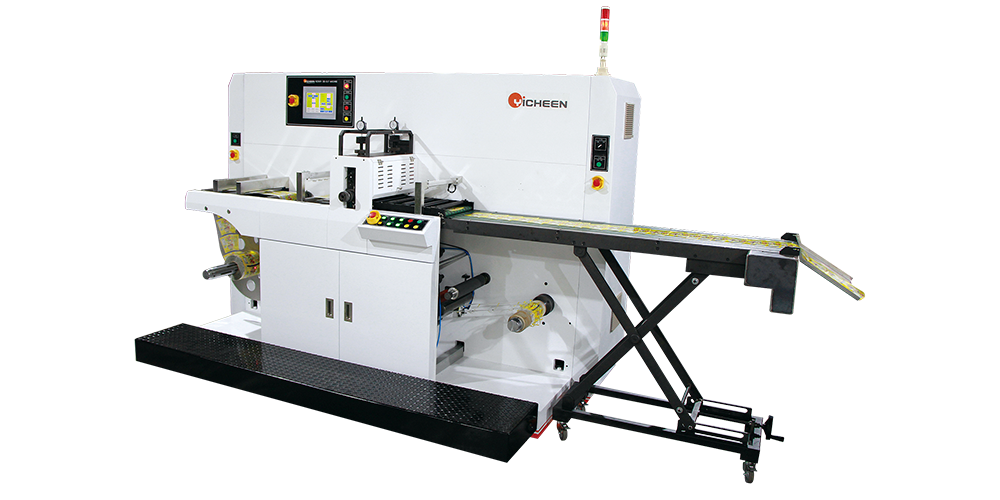
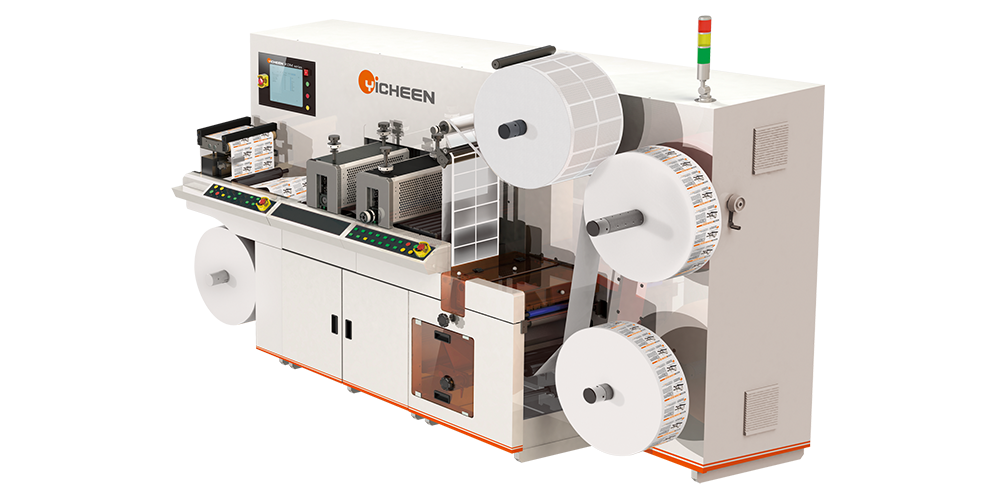
Additional Modules for Die Cutting Machines
Additional modules include varnishing/flexo printing, lamination, cutting, slitting and sheet cutting.
1. The modules of varnishing/flexo printing are used when applying raw material for coating.
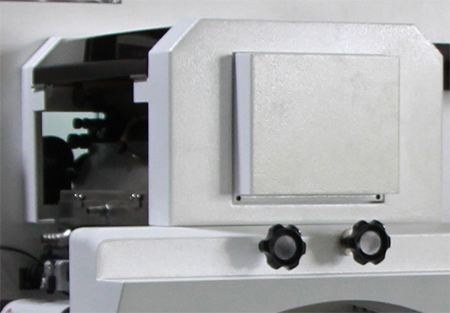
2. The lamination modules are used when applying the film to the surface of raw materials.
| 2-1 Cold Lamination | 2-2 Hot Lamination |
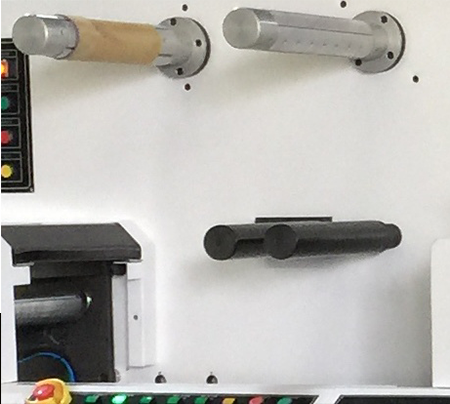 |
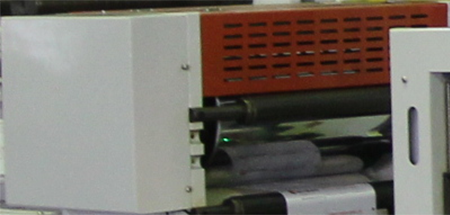 |
3. The slitting machines are used for cutting large rolls of materials into narrower rolls of materials. 【Arrow1】
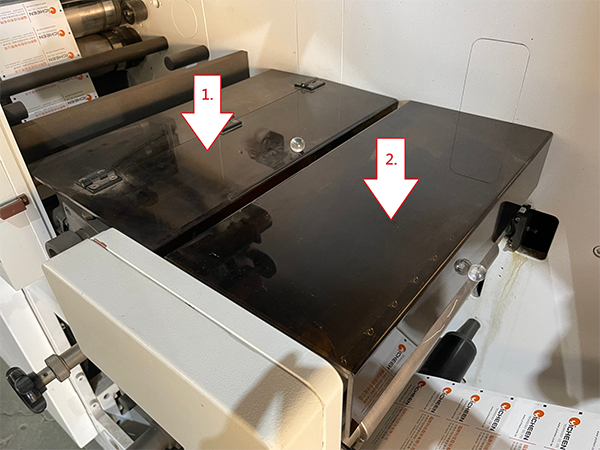
4. The sheet cutting machine, also called reel to sheet cutting machine is designed to convert materials or large rolls to sheets with the needed size. 【Arrow2】
2. Label flatbed die-cutting machines【Full electric / Hydraulic】
Flat-bed die-cutting machine is suitable for large size or small-volume large-variety production. The mold can be replaced in a short time, which saves production cost. The speed can reach 250 times per minute. Additional modules include varnishing/flexo printing, lamination, hot stamping, cutting, slitting and sheet cutting. With these optional functions, you will get a multifunction flatbed die-cutting machine.
Multi-station flatbed die-cutting machines are available, operating in the form of continuous embossing and stamping die-cutting using die molds. They stand out as one of the most efficient die-cutting equipment, offering versatility and high production efficiency.
★ Die-cutting finds widespread application in various industries:
1. Printing and Packaging Industry:
Die-cutting machines are extensively used for cutting materials such as cardboard, paper, and foam. They are employed in the production of packaging boxes, labels, and so on. Additionally, die-cutting machines can perform embossing and stamping to enhance products with various patterns and printing effects.
2. Automotive Industry:
In the automotive sector, die-cutting machines are primarily used for manufacturing interior decorations and sealing elements. Rubber or plastic materials can be die-cut into specific shapes for the production of soft boards, carpets, and door seals, among other parts.
3. Electronics Industry:
Die-cutting machines in the electronics industry are utilized for manufacturing thin films, casings, and accessories for electronic devices. They cut plastic materials into various shapes for items such as casings, buttons, insulating pads, shock-absorbing pads, and screen protection films.
4. Leather and Footwear Industry:
These machines are crucial in the production of products like shoe soles, uppers, and leather goods. They cut leather materials into desired shapes for components like insoles, sole support materials, patterns, and the outer shape of leather bags.
5. Medical Industry:
Die-cutting machines are employed in the medical field for manufacturing medical consumables. Plastic materials can be die-cut into specific shapes for items such as thin films for medical instruments, surgical eye protection masks, tapes, dressings, casings, and face shields.
6. Toy Industry:
In the toy sector, die-cutting machines are used for producing various plastic and cardboard toys. They cut plastic and cardboard materials into desired shapes, offering a diverse range of choices for toys like puzzles and three-dimensional models.
7. Construction Industry:
Die-cutting machines find application in the construction industry for manufacturing decorative materials and building components. Materials like cardboard, plastic, insulating films, and metal can be die-cut into specific shapes for items such as building seals, soundproofing pads, ceiling panels, and wall decoration panels.
8. Household Goods Industry:
Die-cutting machines in the household goods industry are mainly used for manufacturing scrubbers, foam, and sponge components. They cut foam, sponge, and materials combining scrubbers and foam into desired shapes, providing various options for shapes incorporating scrubbers and sponge composite materials.
9. Power and Battery Industry:
Die-cutting machines are crucial in the power industry for manufacturing insulation materials and conductive components. Plastic, rubber, conductive films, and metal materials can be die-cut into specific shapes for items such as sealing pads for power equipment, conductive films, insulation tapes for cables, and wire connectors.
In summary, die-cutting machines have diverse applications in industries such as printing, packaging, automotive, electronics, leather, medical, toys, construction, household goods, power, and battery. They cut various materials into desired shapes, catering to the production needs of different industries. The wide range of die-cutting sizes contributes to increased production efficiency and product quality.
The flatbed die-cutting machine, fully electric model, is suitable for sizes ranging from 350 to 2000 mm. It is ideal for applications requiring either high-speed production or customization after printing, especially for low-volume, diverse production needs.
https://www.youtube.com/watch?v=IsXI10Cycl4&t=9s
- Mechanical speed can reach up to 250 times per minute.
- Die-cutting dimensions: L350~2000 x W350~2000 mm (within the specified range).
- Die-cutting thickness: 0.05 ~ 0.6 mm.
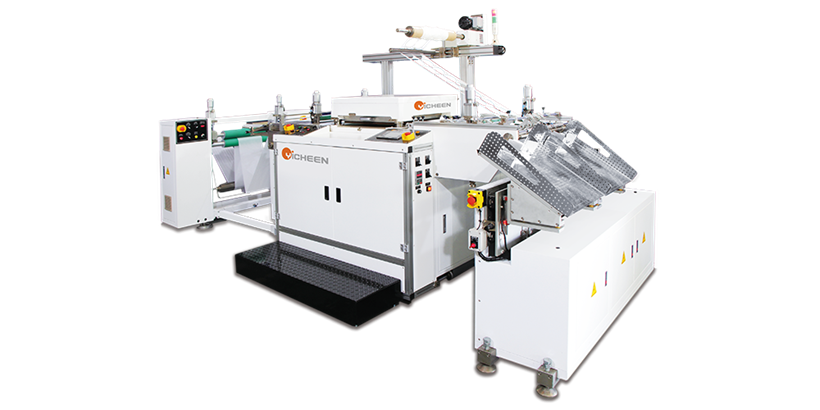
The flatbed die-cutting machine, hydraulic model, is suitable for sizes ranging from 350 to 2000 mm. It is well-suited for applications with low-volume, diverse production needs, especially when printing is required before the die-cutting process.
https://www.youtube.com/watch?v=LDxZcKNLX18&t=3s
- Mechanical speed can achieve 25~35 times per minute.
- Die-cutting dimensions: L350~2000 x W350~2000 mm (within the specified range).
- Die-cutting thickness: 0.05 ~ 20 mm.
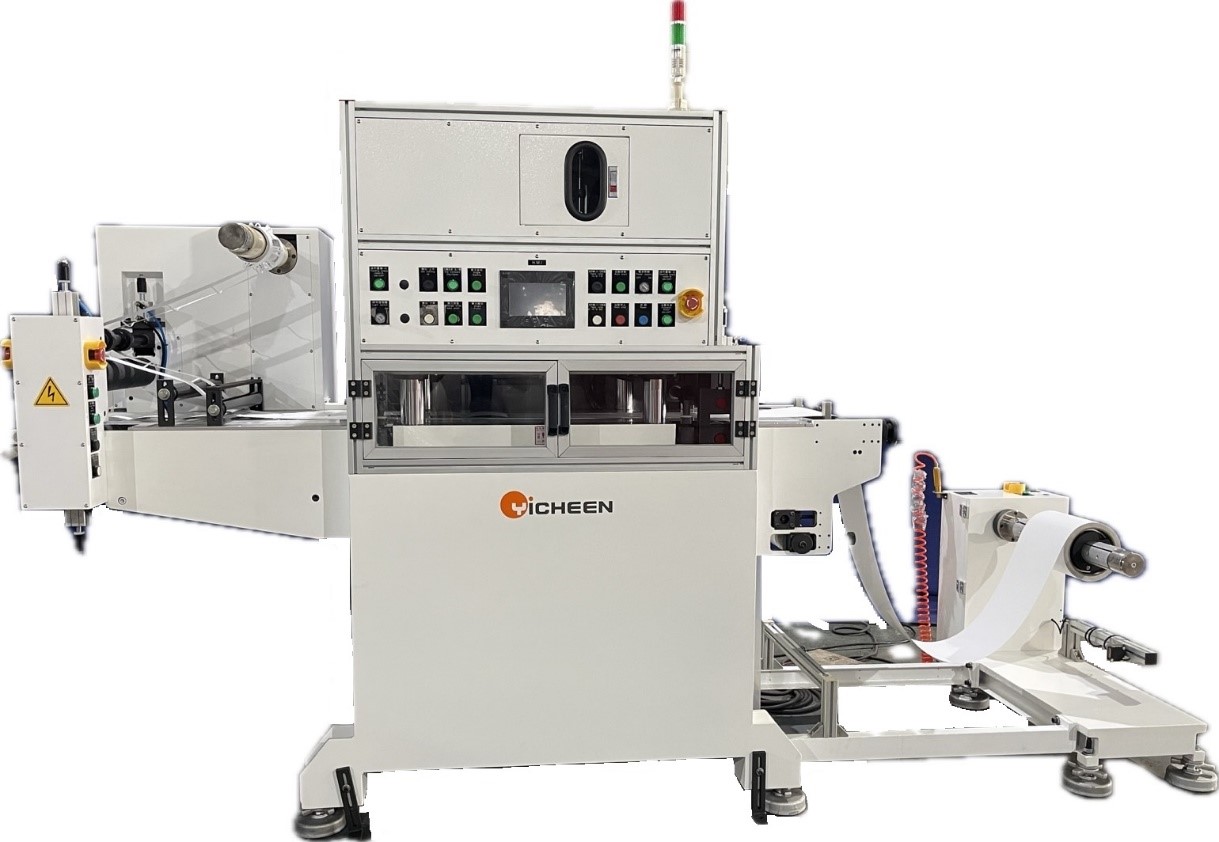
Additional modules can include lamination/peeling/edge-trimming, CCD alignment, hot stamping, cutting, slicing, and rewinding modules.
1. The laminating/peeling module is used to apply adhesive film to the surface of raw materials and is required when needed. It can be utilized both before and after the die-cutting module.
| Laminating Module (Single Layer) | Peel and Laminating Module (Multiple Layers) / Can be equipped with edge trimming and slitting knife. |
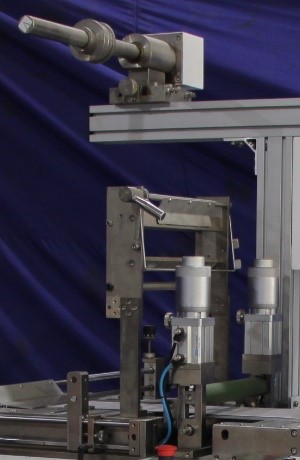 |
|
2. The CCD alignment die-cutting module utilizes a visual camera system for precise positioning and stamp-cutting of the die-cutting object. It offers high accuracy and stability in stamp-cutting, enabling visual inspection and alignment for target shapes such as circles, crosses, diagonals, diamonds, and squares. The system can automatically adjust the X, Y, and θ-axis coordinates to the corrected position, facilitating stamp-cutting operations, especially for products in the printing industry.
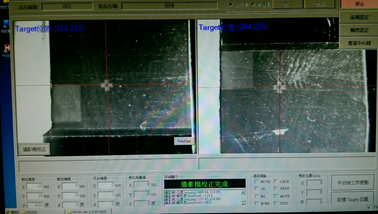 |
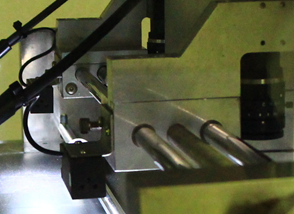 |
3. The hot stamping heating module is employed for small areas on materials such as paper, plastic, leather, PVC, and wood, enabling processes like hot foiling, embossing, and raised effects.
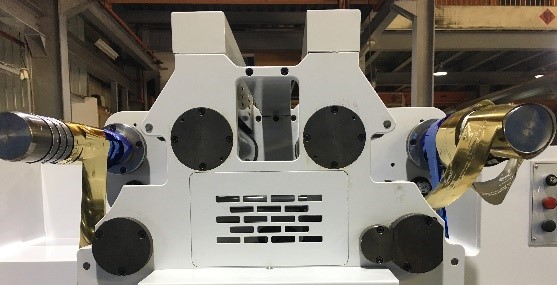
4. The slicing module is utilized for converting roll materials into individual sheets when single-sheet slicing is required for the raw materials.
| Single machine use | Integrated with die-cutting |
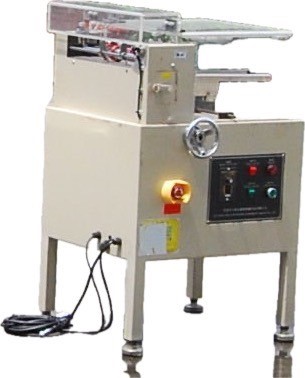 |
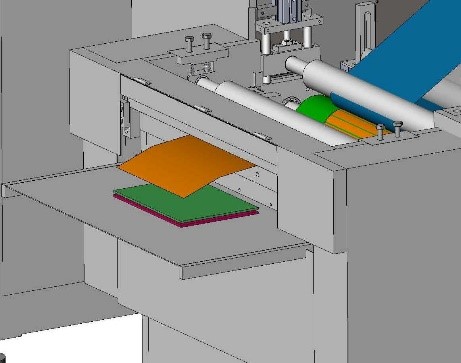 |
5. The rewinding module is employed for both die-cutting semi-cut roll materials and rewinding operations of the original raw materials in roll form.
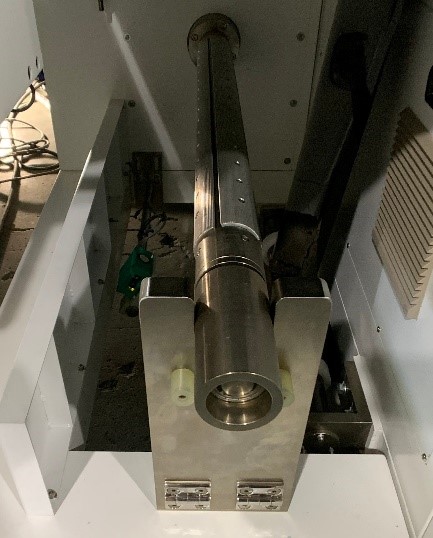 |
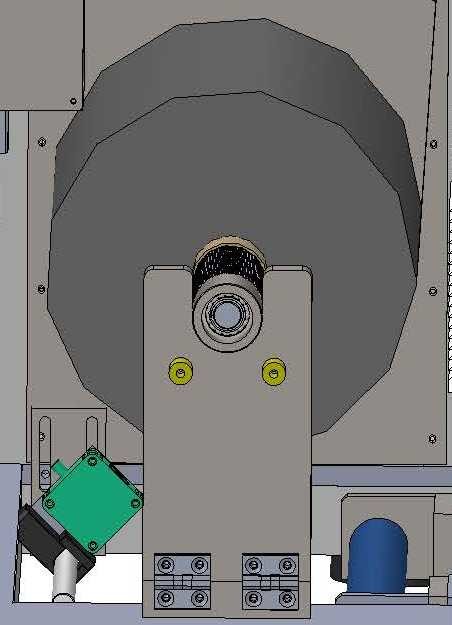 |
Leading Label Die Cutting Machine Manufacturer
The best way to learn more about label converting is by talking with experts who have experience designing specific applications. YICHEEN is one of the leading label die cutting machine manufacturers. Our label die cutting machines are used widely in the world and they enjoy high quality and precise tolerance for producing plain labels, stickers for small, medium and large production. There is many optional equipment including flexo printing, laminating, hot stamping, varnishing, and slitting.
To learn more about label converting equipment or label converting lines, please check out our product details, Label converting and finishing system, download specification, or reach out to the team today.

